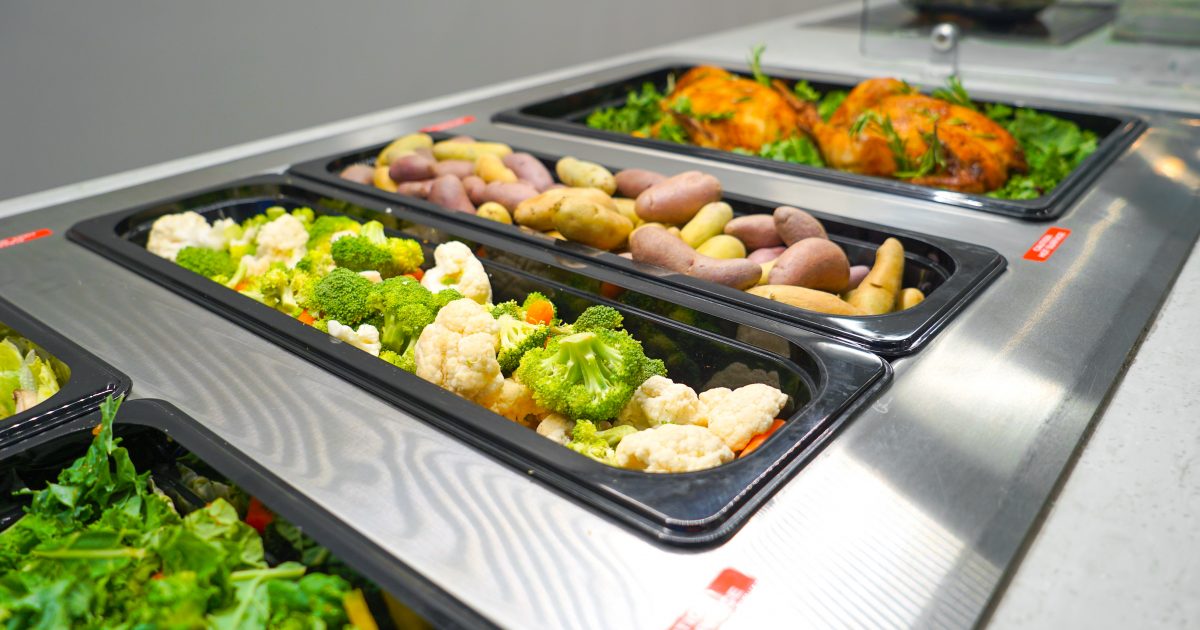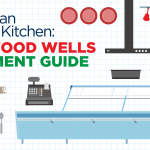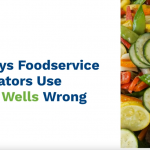The days of using old calrod technology and mechanical controls are in the rearview mirror…
The Definitive Guide to Food Wells

Do you manage a corporate or school cafeteria, a quick-service or full-service restaurant or even a hospital dining facility? With your experience, you understand the importance of having the right foodservice equipment, and that includes food wells. After all, the right food well setup can make all the difference in both food quality and customer satisfaction. In this guide, we’ll walk you through everything you need to know about food wells, including the benefits of hot, cold and frozen wells, as well as pointers for choosing the best options for your establishment.
Why use food wells?
Food wells are temperature-controlled units designed to hold and display food at safe serving temperatures. Here are some key reasons to use them:
- Efficiency: Easily accessible and organized food wells allow staff to serve quickly and efficiently.
- Versatility: Available in various configurations—hot, cold, frozen or combination units—food wells can be customized to meet the specific needs of your operation.
- Presentation: Displaying dishes in an aesthetically pleasing way can boost customer satisfaction.
- Space saving: Drop-in food wells integrate seamlessly into countertops, saving valuable serving area space.
- Adaptability: Flexible options like cold/hot food serving stations allow you to adjust to different menu requirements easily.
Now that you understand the main reasons to choose food wells, let’s explore the different types.
Hot food wells
Hot wells keep cooked dishes at the perfect temperature until they’re ready to be served. These units are commonly used in buffets, cafeterias and catering businesses where maintaining food temperature is top priority. Temperature-controlled drop-in hot food wells are particularly popular, as they can be easily installed into existing countertops, providing seamless integration with your serving line.
Hot food wells come in a variety of sizes and styles, including full-size units that can hold large pans and smaller, modular designs that can be arranged to fit your needs. When selecting a hot well, consider the type of food you’ll be serving, the volume of service and whether you need features like adjustable thermostats or moisture controls to prevent food from drying out.
One notable option is the ThermalWell from LTI. Designed for exceptional performance, the ThermalWell offers advanced temperature control and uniform heat distribution, ensuring food remains at the ideal serving temperature throughout service. With features such as high-quality construction and energy-efficient operation, the ThermalWell is a reliable choice for any high-demand foodservice environment.
Cold food wells
Cold wells are designed to keep salads, fruits and other chilled items at the ideal serving temperature. Like hot wells, cold food wells can be drop-in or standalone units, offering flexibility in design and installation. Whether you’re looking for a single unit to hold a few cold dishes or a large-scale cold/hot food serving station, there’s a wide range of options to meet your needs.
Temperature control is critical in cold food wells to ensure food stays fresh and safe. Many cold wells are equipped with advanced refrigeration systems that maintain a consistent temperature, reducing the risk of spoilage. For added convenience, some units also feature self-contained refrigeration, eliminating the need for external cooling systems. For instance, LTI’s TempestAir system features cutting-edge, patented technology that enables operators to present foods in refrigerated cold pans flush to the counter to enhance appeal and maximize merchandising.
Cold/hot food serving stations
For serving areas that require versatility, cold/hot food serving stations offer a dual solution. These units allow you to keep some dishes hot while chilling others, all in a single, space-saving setup. These stations often feature separate compartments for hot and cold food wells, each with its own temperature controls. This flexibility makes it easier to manage diverse menus and ensures that every dish is served at its optimal temperature.
LTI’s QuickSwitch Glass allows foodservice operators to convert from a food warmer display shelf to a frosted top with the flip of a switch in an hour or less. This means piping hot pizza can be served at the same location as pre-packaged salads! With its sleek glass surface and intuitive controls, the QuickSwitch Glass not only enhances functionality but also adds a modern, sophisticated look to any foodservice setup.
Frozen wells
Frozen wells are the perfect solution for serving frozen desserts, ice cream or any dish that needs to remain below freezing. These units are designed to keep contents at a consistent, ultra-low temperature, ensuring frozen foods maintain their texture and quality throughout service.
QuickSwitch technology from LTI allows operators to transition from a hot well to a frozen surface or vice versa in just an hour or less. This versatility means you can serve ice cream right from the same unit where you might have previously kept hot dishes, giving you the flexibility you need to expand your menu options.
Choosing the right food wells
When selecting food wells for your foodservice space, whether it be a school cafeteria or high-end restaurant, it’s important to consider the type of food served, the layout of your serving area and your budget. Here are a few tips to help you make the best choice:
- Assess the menu: Do you need hot wells, cold wells, frozen wells, or a combination of all three based on your menu offerings?
- Consider capacity: Choose units that can handle your peak service times without compromising food quality.
- Evaluate space: Measure your available space to ensure the food wells you choose fit into your existing setup.
- Look for flexibility: If your menu changes frequently, consider versatile options like cold/hot food serving stations that can adapt to different temperature requirements.
Long gone are the days of using sterno and chafing dishes. Today, technology allows foodservice operators the ease of maintaining precise temperatures, enhancing food quality and easily transitioning between hot, cold and frozen offerings, all with the touch of a button!



